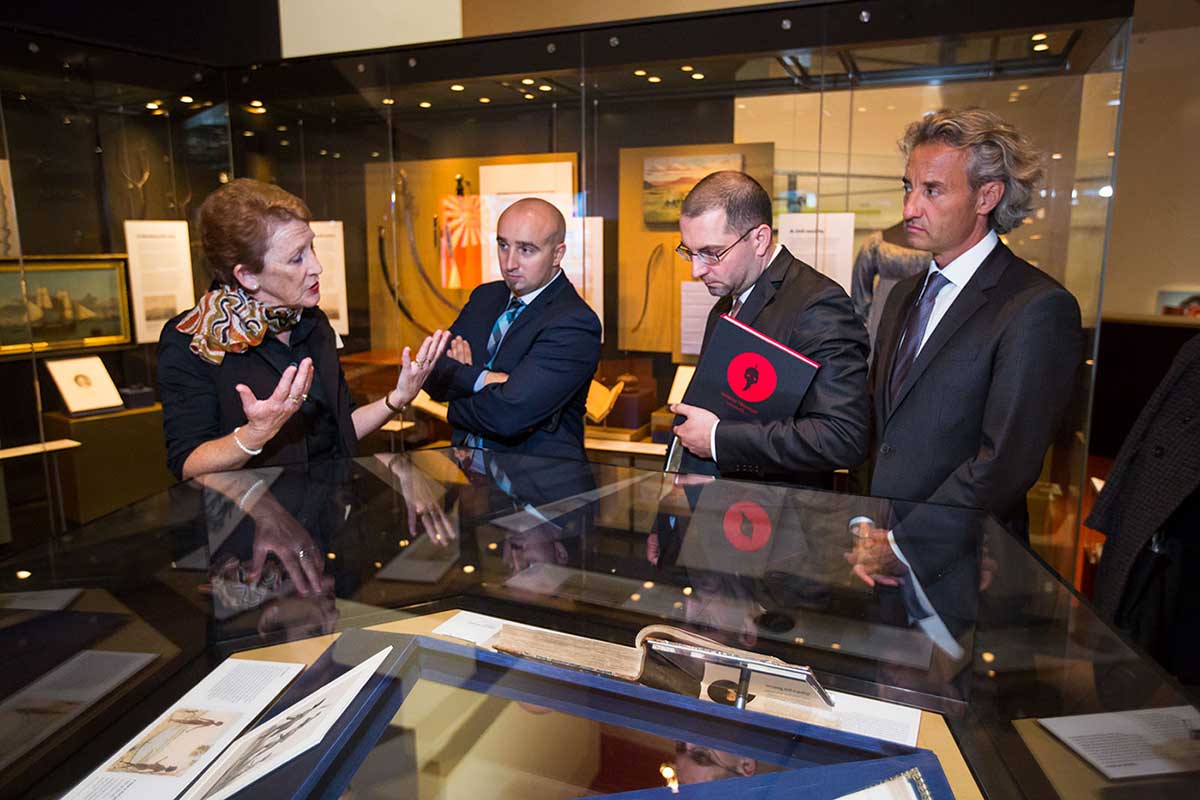The National Museum of Australia is a statutory authority. In 2014–15, the Museum sat within the Attorney-General’s portfolio.
The Australian Government funds the Museum to achieve an agreed outcome through a series of performance indicators, as specified in the annual Portfolio Budget Statements (PBS). The Museum’s outcome is to ensure:
Increased awareness and understanding of Australia’s history and culture by managing the National Museum’s collections and providing access through public programs and exhibitions.
(National Museum of Australia, Portfolio Budget Statements, 2014–15)
Financial summary
The Museum’s financial statements disclose an operating deficit of $1.442 million compared with the 2013–14 operating deficit of $1.264 million. Of the operating deficit, $1.075 million relates to unfunded depreciation of the National Historical Collection. Total income for 2014–15 was $46.756 million (anticipated $45.823 million in the Comprehensive Income Statement in the PBS) while total expenses for 2014–15 were $48.198 million (anticipated $46.917 million).
Revenue from government was $41.590 million and revenue from other sources was $5.166 million (anticipated $4.233 million). This includes gains from donated assets for 2015–16 valued at $0.271 million. Revenue from non-government sources decreased by $0.036 million compared with 2013–14. This is attributable to lower revenue from grants.
Total expenses were $0.113 million more than the previous year. Employee expenses were lower due to reduced staffing numbers during the year. This offset an increase in depreciation expense due to increased asset values from a June 2014 revaluation and a small increase in supplier expenses.
In the balance sheet, the Museum’s net assets increased by $8.128 million. The asset revaluation reserve increased by $7.606 million following a revaluation of Museum’s heritage and cultural assets. The Museum received an equity injection of $1.964 million to fund collection acquisitions.
Cash as at 30 June 2015 totalled $2.439 million (30 June 2014: $1.322 million), and investments totalled $40.000 million (30 June 2014: $39.000 million).
Financial summary 2014–15, measured against PBS
| Budgeted expenses: $46.917m | Actual expenses 2014–15: $48.198m |
| Budgeted departmental appropriations: $41.590m | Actual appropriations: $41.590m |
| Budgeted income from other sources: $4.233m | Actual income from other sources: $5.166m |
Program summary
Quantitative and qualitative performance indicators were met or exceeded across the program that supports the Museum’s PBS outcome:
Program 1.1 Collection management, research, exhibitions and programs
Program 1.1 Objective
The National Museum of Australia’s objectives are to:
- conduct activities to ensure the Museum has a relevant and high-quality collection of objects and associated material. This includes activities associated with maintaining the collection in an appropriate condition, and ensuring it is available to be used in exhibitions and other programs to meet the Museum’s objectives
- conduct activities whereby visitors access objects in the collection or information about objects, and Australian history and cultures, through visiting exhibitions and attending programs in Australia and overseas
- undertake research to enhance awareness of Australian history and cultures, and publish information across all platforms.
Program 1.1 Deliverables
The Museum:
- expanded its collections through the acquisition of key objects that represent the breadth and depth of Australian history and culture
- undertook an ongoing changeover program within the permanent galleries at Acton
- marketed the Museum as a key destination and developed new partnerships to support its core business to reach national and international audiences
- delivered programs for regional Australia including continued participation in the Community Heritage Grants program
- toured temporary exhibitions across metropolitan and regional Australia and achieved the highest number of visitors to travelling exhibitions since opening in 2001
- in partnership with the Department of Foreign Affairs and Trade, toured internationally a panel display as part of a program of facilitating cultural diplomacy
- entered into a number of collaborations with museums in Europe and Asia to enable joint exhibition, staff and research exchange programs over the next three years
- presented public programs for families, children and audiences with a disability, which promoted lifelong learning opportunities
- invested in new technologies that increased online public access to the Museum’s collection
- delivered high-quality education programs that met the standards of the Australian Curriculum
- continued to build a donor base that supports regular giving, major gifts and bequests.
“The Museum expanded its collections through the acquisition of key objects that represent the breadth and depth of Australian history and culture.”
